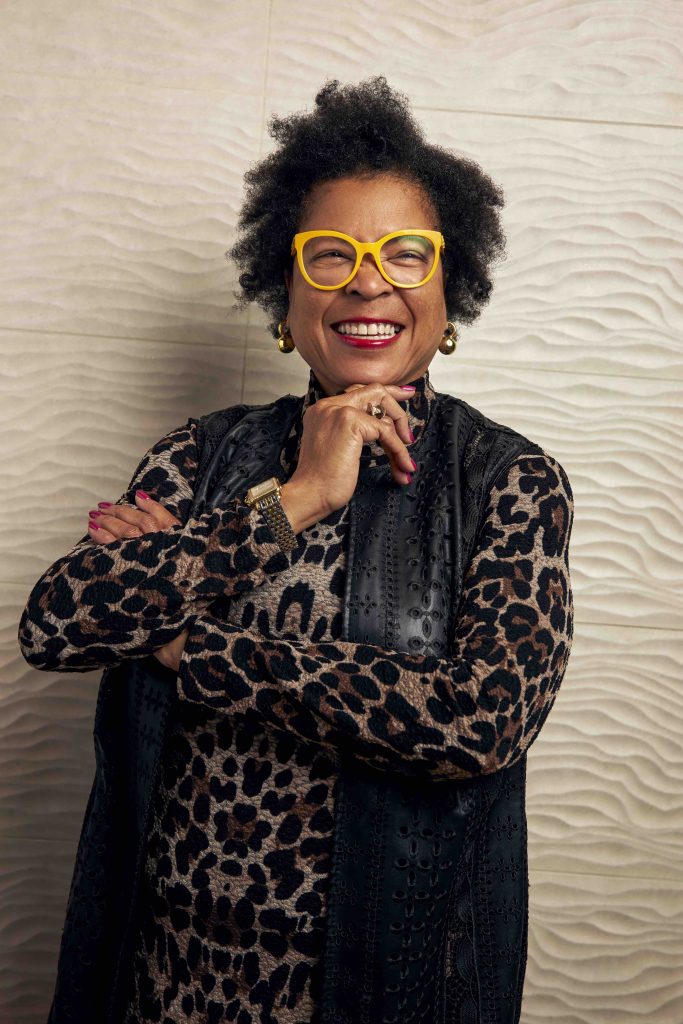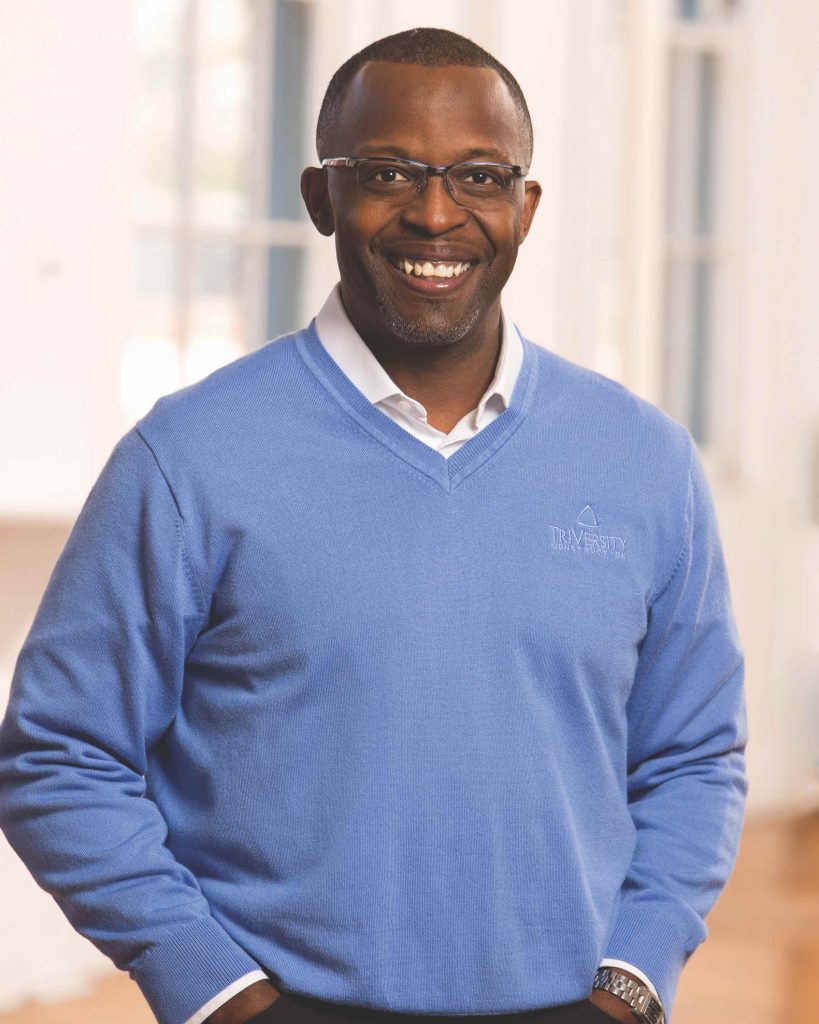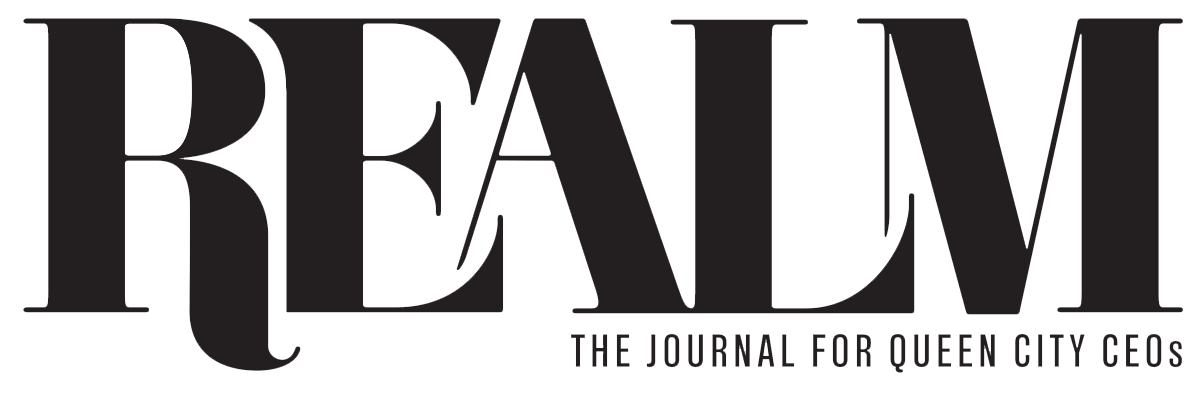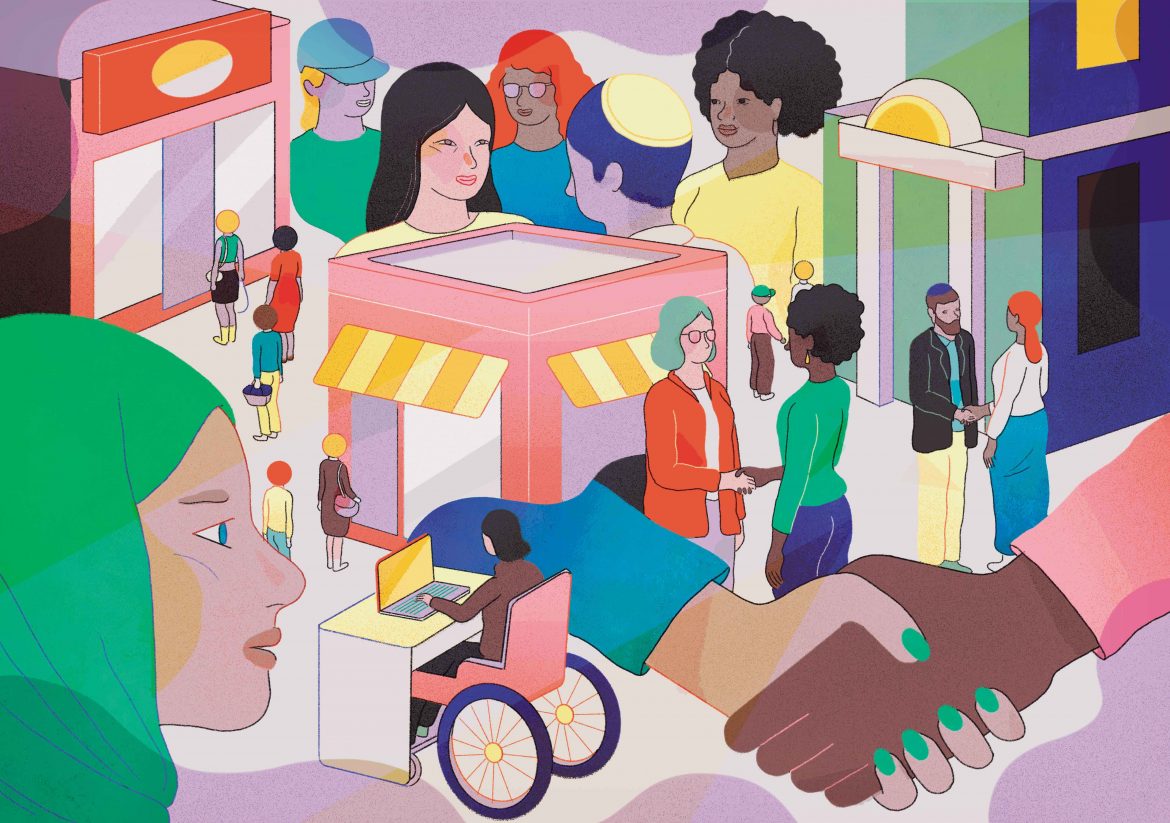The “good old boy network” may not be dead, but thankfully it no longer fuels the majority of America’s business world. Once upon a time, when a corporate executive needed a contractor—whether it was one who could build a skyscraper, replace the HVAC system, or sell you a year’s supply of typewriter ribbon—he flipped through his Rolodex and hired someone he knew. It was almost always a “he” making the decision, and typically he’d hire the same contractor as before, even though there might be a small business owner down the street or across town who could do the job better and faster.
Today, supplier diversity is a mainstream business practice and a vital component of the DNA of leading companies such as Procter & Gamble, Cincinnati Children’s Hospital Medical Center, Fifth Third Bank, Messer Construction, Duke Energy, Kroger, and many others. These companies have boosted growth and sustainability among the region’s minority-owned small business, provided jobs and educational opportunities for employees, and connected executives better with the local community and their customers.
It ’s no surprise that diversity has become a fundamental business tenant, says George Parker, membership services director for the Greater Cincinnati & Northern Kentucky African American Chamber (AACC). “The more suppliers you have, the more options you have and the less risk you face,” he says. “The more diverse they are, the more voices you can have to inject ingenuity and creative thinking into your business.”
Congress laid down the first roots of what’s become a robust supplier diversity movement when it passed the 1964 Civil Rights Act, specifically aiming to break down barriers that had made it difficult for minority- owned enterprises to obtain a small business loan. The Nixon Administration followed up by creating and funding the Office of Minority Business Enterprise to provide grants and technical support for start-up minority businesses. Government’s involvement helped on the supply side, but the business community’s growing awareness that society’s expectations of equity and fairness impacted companies’ bottom lines kick-started the demand side.
“When I got here, I found a company that cared about supplier diversity for all the right reasons, but they didn’t know how to execute it,” says Stanford Williams, vice president and chief inclusion officer for Messer Construction. He’d previously owned a small printing business in Montgomery and joined Messer in 2005 to find a fast-growing company with eight regional offices all doing their own thing when it came to diversity. “It was disjointed and sporadic, and that’s not what Messer wanted,” he recalls. “They wanted to be best in class.”
Williams discovered that Messer had only about a 3 percent spend with minority contractors, largely because of a lack of information. The company didn’t know what contractors were available, and small suppliers didn’t know Messer was looking for them. Many of these smaller firms had another problem: Because they hadn’t been certified by the government as a minority- or woman-owned firm, they were missing out on opportunities. Some didn’t even know there was a certification process.
For Williams, much of what he’s done and continues to do in the supplier diversity space is focus on education, transparency, and communication. He’s expanded the Messer “rolodex” and worked with subcontractors to gain certification and show them how to tap into minority set-asides that many companies and all state and federal projects have in their O&M budgets.
When preparing a bid package for a large project, Williams says, Messer focuses on its larger subcontractors, impressing upon them the need to bring minority-owned businesses on board. “That’s always what the customer wants, and we know we won’t win the contract unless we have them,” he says. “So we tell our subcontractors that we may not know the full scope of their work yet, but if they want to be a part of our bid package they need to bring minority contractors to the table.”
In 2021, Messer spent $215 million with minority and woman-owned businesses, 16.9 percent of their total supplier spending.

Stephanie Smith is a whirlwind of energy. As senior vice president and chief diversity and inclusion officer at Fifth Third Bank, she’s a staunch advocate of diversity that strikes the Venn diagram center of intersecting social justice, community development, and corporate profit circles. She talks fervently about how supplier diversity and lift a community out of poverty while also citing a dizzying set of statistics that one might find on a spreadsheet in 8-point type.
Smith spent 13 years wending her way through the Fifth Third structure before landing, in 2015, as the bank’s first director of supplier diversity. She’d been an underwriter, worked in the company’s foundation, gained experience with angel investing in the economic development area, and headed up divisions in both the commercial and residential lending sides of the bank. It was the experience working with her portfolio of small businesses, especially during the 2008 financial crisis, that opened her eyes to the unique challenges they face.
When she was tapped to take the supplier diversity job, Smith looked at her customer portfolio of 115 small businesses and found that only seven were minority-owned. While larger companies with healthy balance sheets, performance history, and a long-term business plan secured the majority of Fifth Third’s loans, smaller companies struggled. “When you’ve got a large infrastructure, millions in the bank, and projects on the book, it’s not even the same game for small companies where the lifeline may be short, the opportunities to grow are fewer, and the CEO personally does everything from hiring the workers to paying the bills to being the chief bottle washer,” she says. Many of those small companies are minority-owned ventures.
Fifth Third, as Smith says, doesn’t make “stuff;” it makes money. “We don’t make soap like P&G or jet engines like GE, but we do make 162 billion widgets we call liquidity,” she notes. “That’s where we have the ability to impact diverse businesses and help them grow and expand. This isn’t feel-good altruism. Fifth Third sees these minority-owned businesses as today’s customers who, if successfully capitalized, will be tomorrow’s customers. If they grow, the communities they are in grow as well, and so do we all.”
What excites Smith is the direct and personal contact the bank has with what she calls “the A team” when working with small minority-owned companies. Gone are the days when the stuffy banker sat behind a desk and waited for supplicant loan seekers to plead their case. Today’s bankers, she says, need to get out of the office and into the communities they serve. Companies that walk the walk on diversity engage with residents and merchants in the neighborhoods where they live and work.
Fifth Third, Smith notes, has committed more than $41 billion over five years to support minority businesses in its 11-state footprint, including a $20-million investment in the Avondale neighborhood.

Mel Gravely is one of those “A team” executives. You’ve seen his company’s work if you’ve eaten at Sacred Beast, enjoyed an exotic cocktail at Ghost Baby, or settled into your seats in renovated Memorial Hall. The CEO and majority owner of TriVersity Construction is proud to call his company an African American-owned and operated company, but he’s quick to say he wants to be known as a construction company first. TriVersity’s website makes no mention of being a minority-owned business, an omission Gravely says is intentional. And while the site notes diversity as one of the company’s core values, it explicitly points out what diversity isn’t: No quotas, and no compromises on quality.
Minority-owned business still face some pushback from large corporations, Gravely says, but most of the challenges they face aren’t unique to their ownership—it’s more a function of their size. But if a minority business falters, the resulting criticism can take on a different tone, even if it’s subtle.
“There is still a general negative perception of minority business out there,” says Gravely. “People say, They’re too small, too expensive, not capable, not professional, not responsive. You name the ‘nots,’ and they present a definite challenge.” Gravely rejects the “nots,” but he quickly cautions that it’s important for minority-owned businesses to bite off only what they can chew. Failure to perform, he says, can be fatal to a minority business’ reputation.
TriVersity bids on projects only within their capabilities, he says, and prefers being the general contractor. The company will bid on and win a contract to turn a lagering tunnel into a hot night spot, for instance, but doesn’t throw its hat in the ring for new stadiums or downtown hotels. Big projects aren’t always the best projects, Gravely says, and minority-owned businesses need to stay focused within their business plan’s objectives. Opportunities to subcontract in the larger projects are there, and that’s often where a smaller company can cut its teeth, learn, and grow.
“Buyers want to hire minority contractors because that manifests their company values,” says Gravely. “But that doesn’t mean they’ll risk the job by hiring someone who can’t do the work. Supplier diversity creates opportunities, but it’s meant for companies that are ready to compete.”
Gravely points out several examples of large construction projects being broken down into bite-sized parts, tailor-made for small minority-owned businesses to secure because owners want a diverse workforce on site. Companies will sometimes jeopardize margins to promote their diversity values or to develop a future customized supplier relationship.
TriVersity is the largest and perhaps most unique minority-owned businesses in Cincinnati. It was created out of whole cloth by Messer Construction with Gravely and another partner as co-owners. Messer still owns about 20 percent of the company but considers it a competitor. “We created a competitor in the marketplace, gave them a good head start on execution and back-office help, and then pushed them out the door to do their thing,” says Williams. There’s no doubt that solid backing helped TriVersity win its first major contract, the 2011 renovation and expansion of City Gospel Mission.
TriVersity earns more than $100 million in annual revenue and employs more than 100 people today, and the company has reached a scale that many minority-owned businesses can only dream of. But, Gravely says, scale is critical to survival in a world where the marketplace demands more sophistication, specialization, and skill.
That’s where organizations like the Cincinnati Minority Business Accelerator play a vital role. Strategic planning, capacity building, education and training, and talent acquisition and retention are keys to building a vibrant minority business community that can scale, Gravely says, with talent being the trickiest. Larger companies with more lucrative benefits and a prestigious customer portfolio challenge smaller minority-owned companies at the recruiting table. When TriVersity can’t find enough talent here at home, the company employs a national search firm and recruits at historically black colleges and universities.
Training and talent aren’t needed just at the drafting table or on the sales team; they’re needed on the job site, too. When Messer Construction landed the contract to manage construction of the 632,000-square-foot, $600-million Children’s Hospital Critical Care Building, hospital executives were clear they wanted a diverse set of suppliers on the project and wanted Messer to create at least 50 on-site jobs for Avondale residents—a visible signal to the community that they’d heard the skeptical voices wondering what was in it for the neighborhood to give up more land to the hospital.
In response, Messer designed the Urban Workforce Development Initiative (UWDI) and began to recruit neighborhood residents into a training program. Messer found workers, vetted them, trained them, and put them to work with the project’s various subcontractors. Williams calls UWDI’s mission “future building” and views the program as both traditional training and “work hardening”—meaning its graduates don’t just learn a skill but also emerge understanding what’s expected of them and appreciating the value of work. “It means they learn to show up on time every day, put in an honest day’s work, and for that they’ll be rewarded,” he says.
The hospital’s critical care unit is up and running, but UWDI continues to turn out new graduates and link them with other Messer customers. The program also works with workers to address personal barriers to work such as housing, childcare, and transportation needs. Williams and Gravely call UWDI a game-changer that’s lifted workers out of poverty and provided an opportunity to pursue a career path to improve their future fortunes. Messer has recently expanded UWDI to its Louisville and Indianapolis regions and is starting to see success there as well.
Messer’s on-the-job classroom fuels future construction and support jobs by providing training and expanding the local contact list of subcontractors. But what about other businesses? At the African American Chamber, Parker has developed a new software program called AVENUE to serve as a marketplace for both service seekers and suppliers. The more than 400 members of the AACC—some minority-owned but many that aren’t—can use the program to offer available job openings or shop for opportunities that escape public knowledge or word-of-mouth advertisement.
The AACC also helps companies gain state certification as a minority-owned business and provides counselors who can help develop business plans and overcome obstacles—that can include technical assistance, funding opportunities, education, and HR needs. The Minority Business Assistance Center is housed in the chamber’s offices in Walnut Hills and has been especially busy helping with economic recovery from the COVID crisis.
“It’s the same all over the country as here,” Parker says. “These businesses aren’t as capitalized, so they didn’t have the leverage the big guys had to get through the pandemic. If a piece of equipment broke down, they didn’t have the capital to fix it and it was difficult for them to get a loan. If their employees got sick, they had no one to replace them. So a lot of them didn’t make it.”
Smith compares the pandemic devastation among the minority business community to the financial crisis of 2007–2008. While it’s difficult to pinpoint numbers or attribute every casualty to the COVID shutdown, Smith estimates that 40 percent of the region’s minority-owned businesses failed during the past two years. In the national banking industry of more than 65 financial institutions, she says, minority loan customers fell from 7 percent to 5.6 percent of total customers. The exception? Fifth Third, whose minority loan numbers rose to 8.6 percent during COVID. That, Smith says, was intentional.
“We made strategic decisions to maintain the vitality and competitiveness within the supply chain and maintain a strong presence in our communities,” she says.
There are always challenges around the corner, and minority businesses remain more vulnerable. Inflation, rising interest rates, and clogged supply chains are today’s issues, and what about those recession clouds on the horizon? What economic consequences are coming as a result of the long-term damage COVID did to our educational system? Where will tomorrow’s welders, plumbers, electricians, and masons come from? How does a small business survive in an increasingly complex marketplace?
Smith believes a partnership forged with Rutgers University and the national Minority Supplier Development Council will help. Fifth Third invited 80 of its smallest business customers—those with $1 million to $10 million in annual revenue—to participate in a three-year program focused on operational excellence. Company leaders are exposed to experts who can help them think through talent acquisition and retention, finance, inventory management, and individualized business strategies. “This program will help develop their business acumen so they recognize the risks out there and address them before their capital is drained away,” Smith says.
To be sure, there are still critics of diversity programs, and there remain occasional mumblings about “preferential treatment” or “quotas.” The Harvard Business Review published a scathing criticism of corporate supplier diversity programs in April 2021. Too often, author Denise Hamilton wrote, the RFP process is opaque and minority contractors unknowingly underbid. Payment cycles of 75 days or more may work for highly capitalized businesses, she says, but not for small minority-owned businesses with thinner margins and shakier balance sheets. “Many corporate supplier diversity programs included programs to teach entrepreneurs how compete for contracts,” says Hamilton. “But who says we need teaching?”
There may still be companies like that in Cincinnati, Gravely says, but this community is notably enlightened. Companies know that diversity creates perspective. A business plan crafted by welcoming voices from Indian Hill to Bond Hill can expand your market reach. A supply chain that gives minority-owned businesses a fair shake mitigates risk and signals a commitment to community-building. Diversity and inclusion as a corporate value that’s executed effectively attracts the best and brightest employees.
It’s no longer just the right thing to do. It’s the most effective way to do business.


